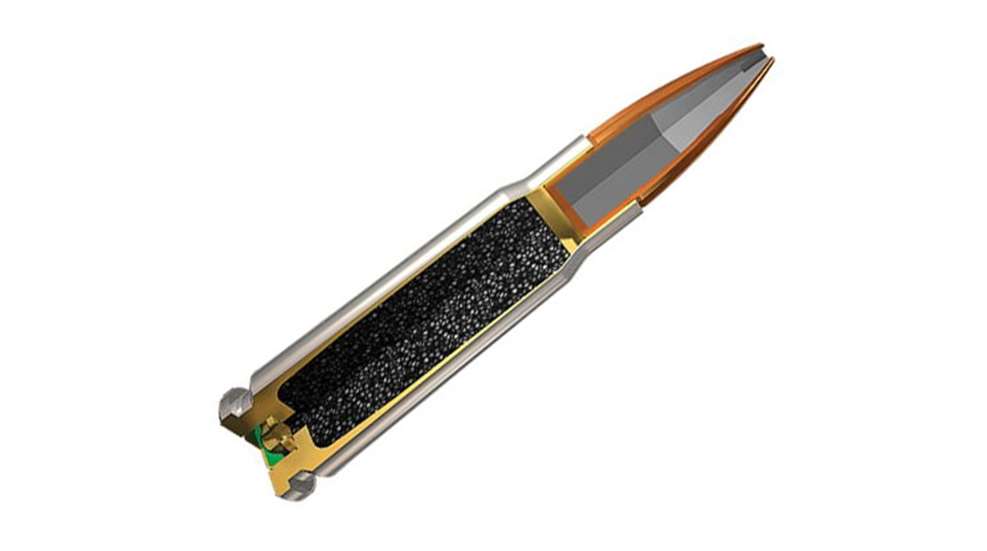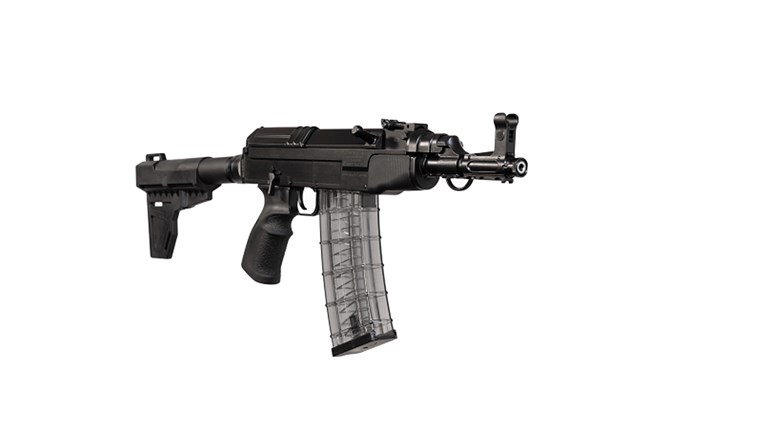
Evolution or science—much of both went into the making of 7.62x39 mm Winchester PDX1 Defender ammunition. Nearly five years ago, the release of Winchester Bonded PDX1 began to stir the market. Winchester Bonded PDX1 bullet met or exceeded FBI standards of maintaining structural integrity when faced with flight path obstructions such as glass, drywall, sheet metal and clothing, resulting in this load becoming the primary service bullet for the FBI. Cartridge offerings for handguns just weren't good enough for Winchester so the evolution into centerfire and rimfire rifle cartridges came forth within the PDX1 line.
The new 7.62x39 mm PDX1 Defender is a sure threat stopper—a cartridge loaded with a 120-grain Split Core Technology (SCT) Hollow Point bullet designed to face the challenges sought after by the PDX1 line. The Split Core Hollow Point bullet is comprised of two lead cores. At first glance, rapid expansion is generated by a hollow point, nonbonded front core then backed by bonded rear core allowing for more controlled penetration. This is ideal in a personal defense situation as well as the major goal in FBI testing protocol. Firing the 120-grain projectile starts with a noncorrosive, boxer primer and low flash powder—wrapped up in a nickel finished case ensuring dependable functionality.
As many of you know, premium ammunition selection for the 7.62x39 mm platform is rather slim. When a few boxes of PDX1 hit my desk, thoughts of testing on whitetail began to peak my interest. I headed to the range with an MGI Hydra convertible AR-15 in 7.62x39 mm and a Samco SKS.
During the first few zeroing shots, a hiccup occurred with the Hydra. After close examination it was apparent a faulty magazine was to blame. Once I upgraded magazines, I had zero malfunctions not only with the Hydra, but also with the SKS. As far as accuracy is concerned, the Hydra was bit more respectable than the SKS, partly due to the 4-12x42 mm optic affixed to the rail versus iron sights on the older rifle. Group sizes ranged from roughly .75 inch to 1.5 inches at 50 yards between the two firearms, proving this load is more than accurate enough for a self-defense situation. Moreover, the low-flash powder proved apparent once the light source was removed, which could be a big benefit in a nighttime home-defense scenario.
By the end of whitetail season I managed to harvest five Virginia does with this cartridge at ranges from 10 feet to 150 yards. I was impressed considering this bullet is designed to meet self defense standards. Winchester's proprietary bonding process proved terminally reliable, whether through heavy bone or just soft-tissue contact. One doe was shot at a distance of 10 feet, and the bottom of its heart was all that was left behind, with the lungs hanging out of the exit wound. Upon internal examination of each specimen, internal wound trauma was high and penetration extremely consistent, with bullet paths straight through and unfortunately irretrievable. I can image weight retention to be rather high, considering no evidence of bullet petals and material left behind.
Deep penetration, massive expansion and perfect weight retention—what more could you ask out of a rifle bullet designed for self-defense?




































